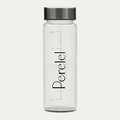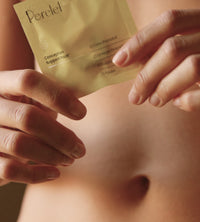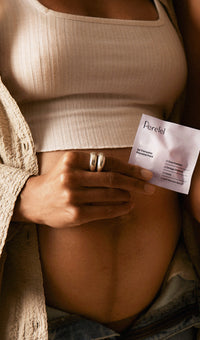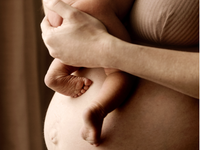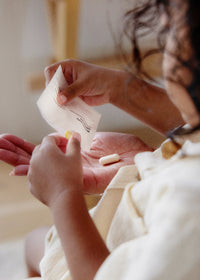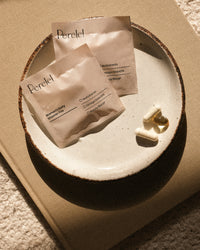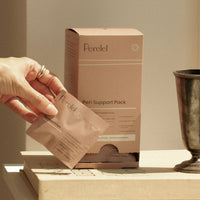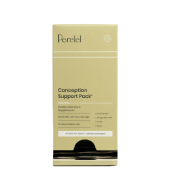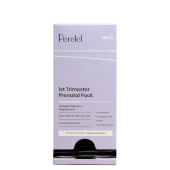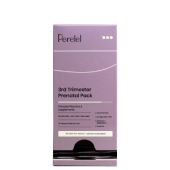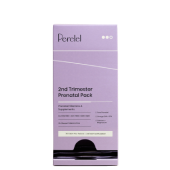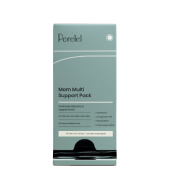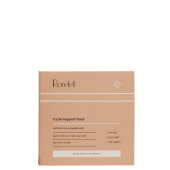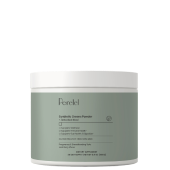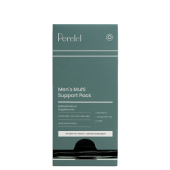Starting your baby on solid foods is a major milestone that marks the beginning of an exciting new chapter for both of you. For your baby, it’s an opportunity to explore new flavors and textures, practice communication skills, establish some independence, and become an active player at family mealtimes. For you, it’s an opportunity to establish healthy lifetime eating habits for your little one, and get to know your baby’s preferences and communication style.
But as exhilarating as this developmental stage can be, it’s also a bit intimidating for new parents who find themselves overwhelmed with questions about how to get started.
If you’re feeling a little apprehensive about your baby’s first solids, we’ve got you covered with this comprehensive guide. From how to know if your little one is ready, to the best foods to start with, we’ve got answers to all your most pressing questions.
When to Introduce Solid Foods To An Infant1
Both the Dietary Guidelines for Americans and the American Academy of Pediatrics recommend that babies try foods other than breastmilk or formula around six months.
But age is not the only indicator that your little one is ready. Your baby’s development is also an important factor. Here are some developmental signs that your infant may be ready to start solids, according to the Centers for Disease Control and Prevention:2
- She sits up alone or with support.
- She is able to control her head and neck.
- She opens her mouth when food comes her way.
- She swallows food instead of pushing it back out.
- She brings objects to her mouth.
- She tries to grasp small objects like toys or food.
- She can transfer food from the front of her tongue to the back—a skill needed for swallowing.
It’s always a good idea to consult with your doctor prior to beginning solids. He or she will be able to determine if your baby is developmentally ready.
First Solid Food To Introduce to a Baby
Since most breastfeeding babies’ iron stores start diminishing significantly at about the six month mark, iron-rich foods like pureed meats, poultry, beans, legumes and iron-fortified cereals are great first foods to give your little one.3
Sticking with soft textures like pureed or mashed foods is a good idea until your baby has developed chewing and motor skills. Once she can bring food to her mouth and understands how to chew, you can start providing pieces of soft fruit and bite-sized finger foods.4
Here is a list of foods to try with your baby according to her age, published by the Academy of Nutrition and Dietetics: 5
6 Months
- Well-cooked and pureed meat, poultry or beans
- Ground, cooked, single-grain cereal or infant cereal mixed with breastmilk or formula
- Cooked and pureed vegetables
- Mashed banana or avocado
9 Months
- Well-cooked, minced or finely chopped meat, poultry or beans
- A mix of cooked vegetables like squash and green beans, cut into small, half-inch pieces
- Sliced and quartered bananas or small pieces of other soft fruits
12 Months
- Soft, shredded meat, poultry or fish
- Small pieces of cooked vegetables
- Small pieces of soft, easily chewed fruits
- Mixed food dishes the family is eating in appropriately sized pieces
There is no reason to hold off on introducing common allergy causing foods like egg, peanuts, tree nuts like cashews or almonds, soy, sesame, wheat, fish or other seafood. In fact, experts recommend introducing these foods by 12 months (in an age-appropriate form) since research shows that delayed introduction can actually increase the chance of a baby developing a food allergy.6
Just make sure you introduce one new single-ingredient food at a time, and stick with that ingredient for three to five days before moving on to another—this way, if your baby does happen to experience allergy symptoms (diarrhea, vomiting, rash), you’ll know which food is the culprit.7 And unless your baby experiences an allergic reaction, continue to serve those foods regularly (twice weekly is a good goal), since trying a food and then not giving it regularly could also result in the development of a food allergy.8
Foods to Avoid
As far as foods to avoid? Stay away from giving your little one honey until she hits the one year mark since it can cause foodborne illness.9 Cow’s milk shouldn’t be introduced prior to your baby’s first birthday either (although yogurt and cheese is fine before that).
It’s also advised that you avoid the following potential choking hazards until your little one reaches four-years-old.10
- Popcorn
- Whole kernel corn
- Nuts and seeds
- Large chunks of meat, poultry and cheese
- Candy, gum drops and jelly beans
- Hard, raw fruits or vegetables like apples, celery and carrots
- Whole grapes and cherry tomatoes (unless cut into quarters)
- Hot dogs (unless cut into strips and bite-size pieces)
- Sticky foods that can get stuck in the back of the mouth like peanut butter (to introduce nuts and also prevent choking, try spreading nut butters in a thin layer on soft bread, or puree peanut butter or peanuts with fruits or vegetables).
How To Offer A Baby Solid Food
Try to make eating solids a positive experience for your baby by talking to her throughout the process and moving at her pace. If you breastfeed, try giving your baby solids after an afternoon or evening breastfeeding session since that’s when your milk supply is likely the lowest—so your baby will be content but not completely full.
Here are some other baby-feeding basics that should help make it enjoyable for both of you:
Start Small
In the beginning, it’s just about exposure—to flavors, to textures, to the whole eating experience. Solids are not initially intended to replace breastmilk or formula; they’re meant to complement them. Start with just a few spoonfuls so your baby can get a taste of what food feels like, smells like and looks like.
Make it Comfortable—and Safe
Once your baby is sitting without support, use a highchair with a stable base and safety straps. If you have other children, make sure they don’t hang on the chair. Make sure all food is small enough, and never leave your baby alone with food or utensils on her tray.
Dish it Out
Even though it may be tempting to feed your baby right from a jar or container, if you plan to save any of the food, it’s best to serve it from a separate dish. Saliva on the spoon can introduce bacteria into the leftover food, causing it to spoil.
Bye Bye, Bottle
Introducing a cup during mealtimes is a great first step toward weaning from a bottle. Try filling a cup with breastmilk or formula and serving it during feedings. While you’ll likely have to do most of the work in the beginning, by the nine month mark, your little one may be able to drink from the cup on her own.
Embrace the Mess
Remember that solids are completely foreign and very interesting to your baby. She is likely to play with her food, squishing it between her fingers and maybe even tossing it off her tray. Using a conventional or long-sleeved bib will help contain the mess, as will placing a towel or tablecloth beneath her highchair.
Don’t Force It
If you’re feeding your little one and she turns away, it’s a sign that she is either not interested or that she has had enough to eat.11 Whichever it is, don’t force it. Keep mealtime a positive experience for your baby by following her cues. Simply try the food another time. You can also make the transition easier on your baby by mixing the first mashed or pureed foods with breastmilk or formula. The flavor familiarity may make her more receptive to trying the solids. And don’t give up: Research indicates that some babies need multiple exposures to a new taste before they learn to enjoy it.12
How often should you nurse a baby when introducing solid foods?
In the beginning, feeding your baby solid food is more about exposing her to new tastes, textures and skills than it is about weaning her off of breastmilk. Plus, your little one is more likely to be receptive to solids if she is content and not overly hungry.13 That’s why it’s important to continue to breastfeed your baby according to her normal schedule, and follow her cues. Over time, as your baby starts to naturally increase the amount of solids she eats at each feeding, you’ll likely find that your breastfeeding sessions shorten in duration and lessen in frequency.14
Feeding Schedule
You can start feeding your baby solids once a day, and gradually increase to two or three times per day.
From six to nine months, breastmilk and formula should still be the primary source of nutrition, so give your baby these first, then provide solids after.15 Once your baby hits nine months, you can consider swapping that order, especially if you plan to wean your little one around the year mark.16
$41.14
First 3 Mo
First 3 Months
Shop the Article:

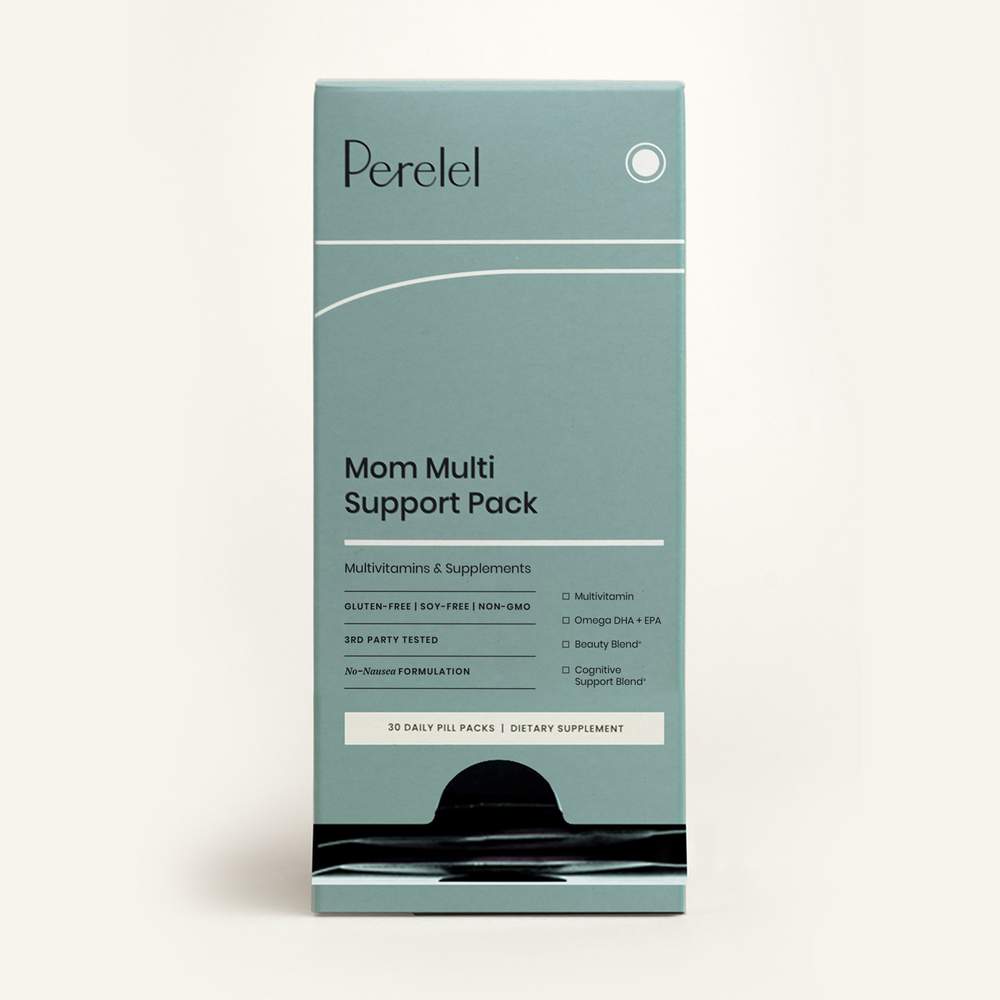
Mom Multi Support Pack
Shop Now
Tell us how your feeding experience is going—join our community, Village by Perelel, to connect with other moms who get it. Plus, shop breastfeeding-safe vitamins for moms now.
This article is for informational purposes only. It is not, nor is it intended to be, a substitute for professional medical advice, diagnosis, or treatment and we recommend that you always consult with your healthcare provider. To the extent that this article features the advice of physicians or medical practitioners, the views expressed are the views of the cited expert and do not necessarily represent the views of Perelel.
